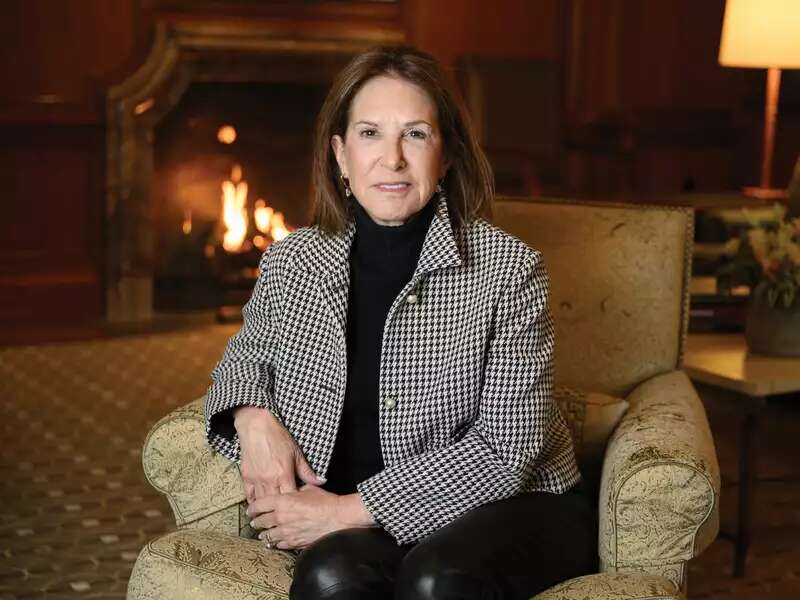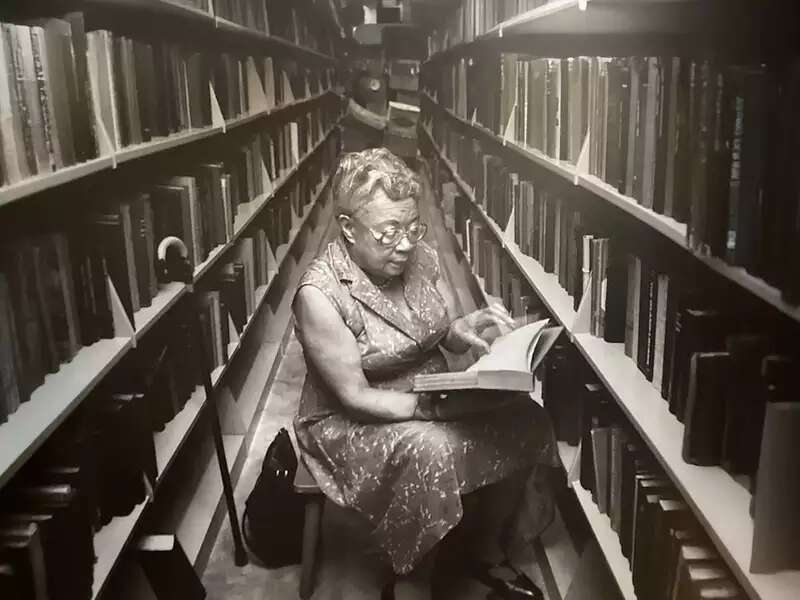From Barnard Magazine, Fall 2008
“What if?” Judith Kaye posed the cosmic question early in her on-campus address this fall. She was asking everyone in the audience to reflect on life’s “fortuities” and on the “one small decision that took you down an entirely different path.”
Threading her theme of choice and chance with a blend of humor and humility, Kaye reviewed her career and the judicial causes she’s championed. Her talk in the James Room followed brief introductory comments by Chair of the Board of Trustees Anna Quindlen ’74, and President Debora Spar—in which Quindlen called Kaye “the essential Barnard woman, because she has used a position of great prominence not for self-promotion but to do great good in the justice system,” and Spar praised Kaye’s leadership in ushering the New York courts through “an age of unprecedented reform.” Kaye’s address preceded a segment in which she was interviewed by the president and a final segment with questions from students and other audience members.
In her prepared remarks, Kaye answered her own question about life-altering choices by recalling a decision she made as a 15-year-old from Monticello, New York: “For me, the greatest fortuity was coming here to Barnard College.” It was a move greeted with chagrin by her parents, she said. They wanted her to stay out of the big city and attend college upstate, but Kaye had her sights set on Manhattan and a career as a world-famous journalist.
Silent about having been smart enough to skip two grades in high school, Kaye spoke about arriving at Barnard and being awed by her brilliant, sophisticated classmates. Eventually the girl from the Catskills found her way to a major in foreign-area studies with a concentration in Latin America, and a post as the Barnard Bulletin’s editor-in-chief. But upon graduation in the Eisenhower era, she found that a woman’s brains, her bachelor’s degree, and her press experience garnered little respect. She remembered ruefully that after she “searched the entire east coast for a job,” she reluctantly signed on as the social-news reporter for a local paper in northern New Jersey.
Even that disappointment turned out to be wonderfully fortuitous, Kaye said, because her misery in her day job led her to enroll in night classes at the NYU School of Law. From then on, as a law student, an attorney, and eventually a judge, she found her journalistic training useful in “learning to separate what’s important and unimportant—to always look for the what,where, when, and why” of every case. Again, Kaye’s parents opposed heruntraditional path. “Who on earth would marry me?” she recalled their worries on her behalf. And again, potential employers rejected her for work traditionally done by men. “Our quota of women is filled,” she repeatedly heard—a quota she knew was zero. Summing up the frustrations and inequities she faced at the time, Kaye told her audience, “As a woman, it was no picnic finding a job at a law firm in 1962.”
Kaye’s story echoed a similar one told at Barnard by United States Supreme Court Justice Sandra Day O’Connor in 2005. O’Connor also talked about finding it impossible to be hired by a firm when she graduated third in her class from Stanford Law School in 1952. Positions as a legal secretary were all she was offered in the private sector, so O’Connor chose the public sector and work as a deputy county attorney.
Kaye did manage to land a position at Sullivan & Cromwell, a major New York firm. There she found both a job and the man who would become her husband. Over the next 21 years, she took great satisfaction in practicing law full time while raising their three children. In 1983, she made history as the first female appointee to the New York State Court of Appeals, joining six other judges on the state’s highest bench. “There’s nothing like a day at the Court of Appeals,” Kaye told her audience. “I call it ‘lawyer heaven.’”
She cited the wide range of decisions and issues she reviews—from the constitutionality of the death penalty to the quality of the public schools, from the liability for a sidewalk fall to the legality of a same-sex marriage. Most personally rewarding, she said, is her work on behalf of the many youngsters embroiled in the legal system and the state courts. Kaye has chaired the Permanent Judicial Commission on Justice for Children for the last 18 years. “Whatever I do in my next life, children will be the centerpiece,” predicted Kaye, who has reached the court’s mandatory retirement age and will end her tenure this year.
Kaye is probably best known for her accomplishments as the Chief Judge of the State of New York. She was the first woman named to the post, and since her appointment in 1993, has served longer than any predecessor. She oversees more than 15,000 employees, a budget in
excess of $2 billion, and the policies and administration of the state’s entire judicial apparatus. One of her most acclaimed successes is the transformation of the jury system—a system that was long denounced as inefficient, and one that excluded huge numbers of citizens from service.
“I thought there was no place to go but up,” Kaye said of the sweeping reforms she enacted with legislative support. Today, thanks to those improvements, both potential and selected jurors enjoy the respect, equitable treatment, comforts, and conveniences they deserve as they exercise their constitutional rights and responsibilities.
Kaye said that a crucial ongoing task of the Chief Judge is the establishment of problem-solving courts in local communities—courts to handle crimes that are low-level but extremely corrosive to the community. Rather than just imposing punishment, Kaye said, these courts take a careful look at each offender and try to find ways to interrupt the downward spiral of a person’s life. Born in New York, the idea has inspired duplication around the world.
The judge concluded her remarks by noting the vast improvements she has seen in the status of women during the course of her career. She also pointed out that complete equality is an elusive goal and much remains to be done.
—By Anne Schutzberger
—Photography by Juliana Sohn


